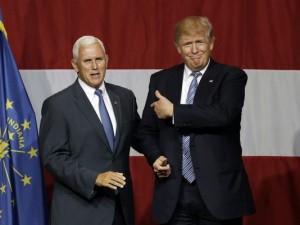A”whiter shade of pale” Mike Pence is in Phoenix today for the GOP tax scam tour. Vice President Mike Pence visits Phoenix today on tax policy tour:
 Pence will arrive shortly before noon Tuesday before meeting with Republican Arizona Gov. Doug Ducey.
Pence will arrive shortly before noon Tuesday before meeting with Republican Arizona Gov. Doug Ducey.
Arizona Republican U.S. Rep. Andy Biggs and local business people are expected at the “Tax Cuts to Put America First” gathering at a Tempe hotel.
Maybe an enterprising reporter will ask Pence about Senator Marco Rubio’s view of the GOP tax scam. The Economist reports, Marco Rubio offers his Trump-crazed party a glint of hope (snippet):
“There is still a lot of thinking on the right that if big corporations are happy, they’re going to take the money they’re saving and reinvest it in American workers,” he says. “In fact they bought back shares, a few gave out bonuses; there’s no evidence whatsoever that the money’s been massively poured back into the American worker.”
Arguing that the tax bill’s corporate tax rate cuts aren’t benefiting the average worker is exactly the opposite of what VP Pence will say today about the GOP’s only major legislative “accomplishment.”
For once, “Little Marco,” as Pence’s boss denigrates him, is right. The New York Times reported this week, Investment Boom From Trump’s Tax Cut Has Yet to Appear:
 Republicans sold the 2017 tax law as “rocket fuel” for American investment and growth, saying that corporations — flush with cash from lower tax rates — would channel money back into the economy by building factories and offices and investing in equipment, which would help companies grow and provide winnings for workers.
Republicans sold the 2017 tax law as “rocket fuel” for American investment and growth, saying that corporations — flush with cash from lower tax rates — would channel money back into the economy by building factories and offices and investing in equipment, which would help companies grow and provide winnings for workers.
Economists say that may happen as companies readjust their spending plans over the coming months to take advantage of the new law, and they note that it is too early to tell how much the tax law will spread into the broader economy.
But, so far, hard evidence of such an acceleration has yet to appear in economic data, which show more of a steady investment roll than a rapid escalation. And while there are pockets of the economy where investment is picking up — among large tech companies and in shale oil business, for example — corporate spending on buying back stock is increasing at a far faster clip, prompting a debate about whether the law is returning money to the overall economy or just rewarding a small segment of investors.


